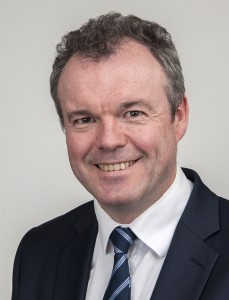UK’s 2015 Strategic Defence and Security Review (SDSR) was very positive for MBDA
By David Oliver
At MBDA’s Press Conference in London on 17 March, alongside Antoine Bouvier, Chief Executive (CEO) of MBDA was Dave Armstrong, Executive Group Director Technical and UK Managing Director and the Chief Financial Officer Peter Bols.

Antoine Bouvier confirmed that the mutual dependence between France and the United Kingdom would be ratified in the next couple of months. He said that the UK’s 2015 Strategic Defence and Security Review (SDSR) was very positive for MBDA and that despite an uncertain political outlook and falling oil prices, some 600 new employees had joined MBDA in the UK.
In terms of industrial cooperation and integration, 2015 was marked by a new step in the One Complex Weapons strategy, with the first output from the specialised Centres of Excellence for French and UK programmes and the signing of an agreement between the governments of both countries. Finally, on 3 March 2016, the Franco-British summit in Amiens confirmed the decision to launch a joint concept phase for the Future Cruise/Anti-Ship Weapon (FC/ASW) programme.
2015 also saw increased availability of MBDA’s airborne missiles on European combat aircraft. The Meteor Beyond Visual Range Air-to-Air Missile (BVRAAM) completed its integration tests on Gripen and should enter operational service with the Swedish Air Force this year while integration on Rafale and Eurofighter Typhoon is ongoing. The integration of Brimstone on Eurofighter Typhoon began in 2015, making this missile the fourth in the MBDA portfolio —following ASRAAM, Meteor and Storm Shadow / SCALP, to become available for customers of Typhoon and is part of the P3E standard
European fighter.
Dave Armstrong MBE, who was appointed to the role of MBDA UK Managing Director and EGD Technical (Executive Group Director) on 1 April 2015, is responsible for the technical capability, the R&T investment and the development of advanced systems and products across the MBDA Group. Dave’s previous role within MBDA was as Group Director Meteor with wider responsibilities for short and medium range missile programmes across France, the UK and Italy.
He announced that the construction of a new £100 million MBDA 100,000 square feet manufacturing integration facility in Bolton was ongoing. In September 2015 MBDA received a capability sustainment contract worth over £300 million from the UK Ministry of Defence that ensures the Royal Air Force remains equipped with the highly capable, infra-red guided, air-to-air missile ASRAAM. At the same time MBDA started delivering hardware for the first Sea Ceptor missile system installation after the Royal Navy approved a ‘commit to fitting’ for HMS Argyll. Sea Ceptor will replace the current Seawolf system for short-range air defense on the Royal Navy’s Type 23 frigates and future Type 26 Global Combat Ships.
In November the Eurofighter Typhoon aircraft successfully releases a first Storm Shadow standoff missile as part of the UK MoD Project Centurion.
Dave Armstrong told EDR that he expected the UK MoD is expected to extend MBDA’s assessment phase contract on the Selective Precision Effects at Range (SPEAR) Capability 3 missile programme which is on schedule in the near future. He also said that there are new opportunities for the Dual-Mode Brimstone 2 anti-armour missile system which was fully integrated onto the RAF Tornado GR.4 in May 2015. He sees a clear air-to-ground weapons credibility gap for the F/A-18 in particular.
Unmanned Aerial Vehicles and rotary-wing aircraft are both ideal platforms for Brimstone 2 which has already been successfully fired from a Reaper UAV and will be integrated on RAF Reapers and its successor, Protector. France is considering integrating the missile on its Tiger combat helicopter and it will be flight tested on a Boeing AH-64D Apache later this year. Brimstone 2 will use the same launch rail as the Apache’s current air-to-ground missile, Hellfire, and MBDA is employing former Army Air Corps Apache pilot reservists.
Armstrong told EDR that MBDA is increasing its R&T investment by £40 million over the next five years, working on projects with Selex and Qinetiq, and looking at future technologies such as laser architectures working with the UK Defence Science and Technology Laboratory (DSTL), and high temperature ceramics with SMEs.
